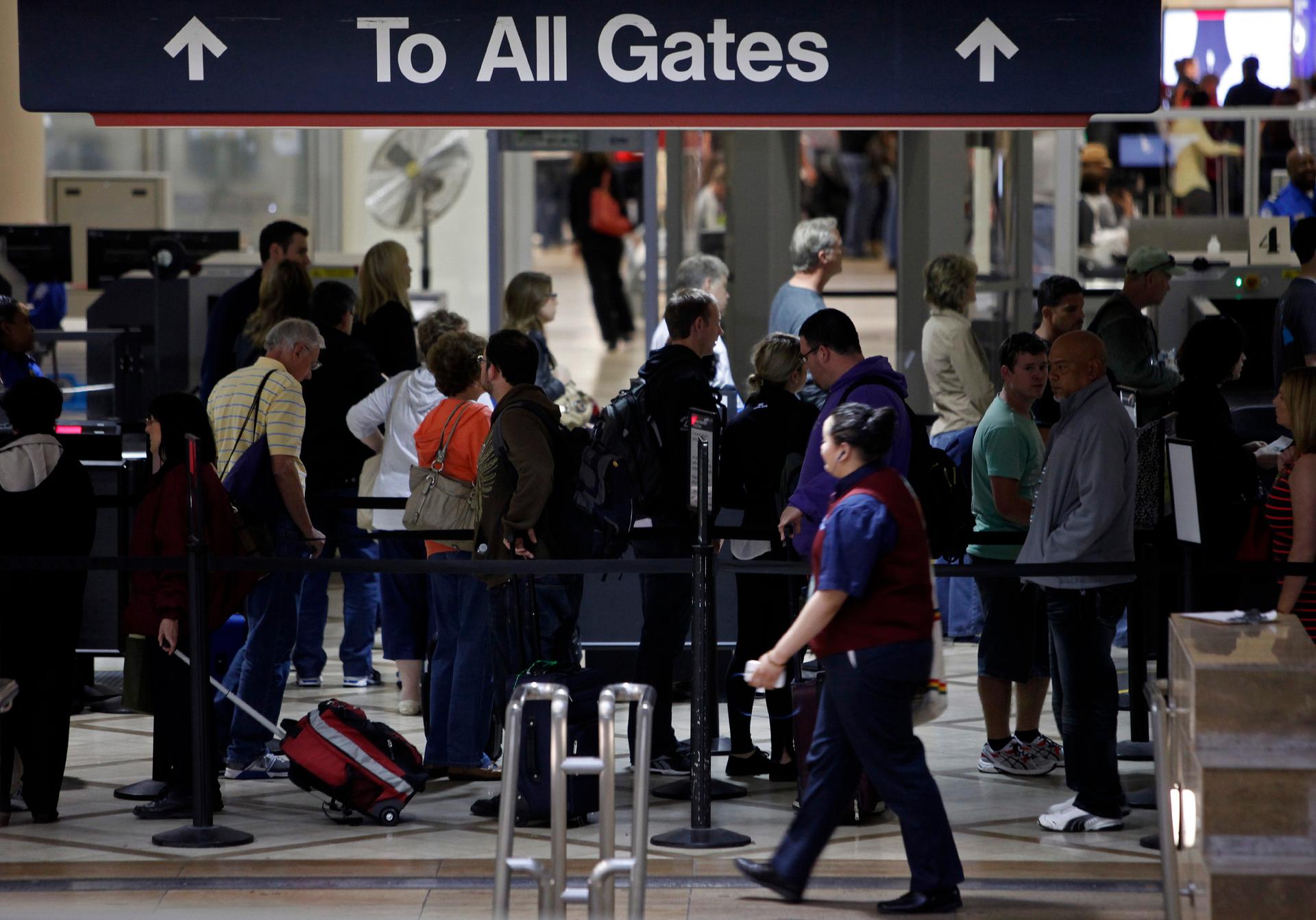Thousands are on US terrorist watch lists, rightly or wrongly, and there’s nothing they can do about it
Passengers wait to enter Transportation Security Administration (TSA) security in Terminal 5 at Los Angeles International Airport on April 24, 2013.
At least 700,000 are on the US terrorist watch list currently — though it's hard for anyone to know for sure.
The government doesn't reveal who they are, or why they've been marked as a potential threat, but we know the number of people who've been marked has grown considerably over the last few years. It rose sharply after the failed Christmas Day bombing in 2009, eventually peaking at nearly 1,000,000 travelers.
For many individuals branded with the terrorist label, it's nearly impossible to challenge the designation and regain the right to fly — or at least to fly with less hassle. It's a watch list that very few people are actually watching.
Anya Bernstein, associate professor at the SUNY Buffalo Law School and author of “The Hidden Costs of Terrorist Watch Lists,” says there's no indication law enforcement is ever evaluating the accuracy of the names they add to the list.
"They're making predictions about people's likelihood of engaging in terrorist acts, but there's no retrospective review. So you can get on a list by being suspicious to someone, but you can't get off," she says.
And there's really nothing anyone can do if they think they're on the list. They can't even get official confirmation from the government that they were put on the list in the first place, Bernstein says.
The terrorist watch list is different from the much smaller US government "no fly" list. The no fly list has tens of thousands of people, rather than the hundreds of thousands on the suspected terrorist list.
"There's a case on the no-fly list that is at trial right now and the government refuses to diclose whether the person is on the no-fly list," Bernstein says. "It's completely agency internal. It's all law enforcement."
You can ask the government to review any information it has on you and possibly reconsider its judgment. No other lists have any process that's even that inclusive. But sometimes people do get removed — just not usually through any action of their own, she says.
In 2006, about 71,000 people were on the no-fly list, prompting criticism from the Department of Justice. Within a year, the terrorist screening center had cut the list to 34,000 — a step they seemingly weren't interested in taking until prompted by the Justice Department, Bernstein said.
Short of a lengthy court battle, there's no administrative way to get yourself off the list. And it's not the only list. While the no-fly list is the most well-known, Bernstein says there are many other government watch lists that can have other impacts on your life.
In a trial a few years ago, a judge ruled that someone's inclusion on a watch list isn't in and of itself grounds for arrest, but it can be a piece of the probable cause police use when determining if an arrest is warranted.
"It counts as a strike against you," Bernstein says.
